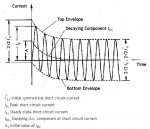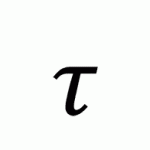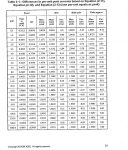I am modeling in ETAP using IEC standards for the first time. While using the ANSI standards in ETAP, a bus short circuit rating is entered as symmetrical RMS and asymmetrical RMS. Using the IEC standards, the only thing entered is a peak value. All my vendors have provided ratings as symmetrical values. How can I convert the vendor symmetrical numbers to a peak number to enter into ETAP?
You are using an out of date browser. It may not display this or other websites correctly.
You should upgrade or use an alternative browser.
You should upgrade or use an alternative browser.
System Modeling with IEC Ratings
- Thread starter dms292
- Start date
- Status
- Not open for further replies.
Julius Right
Senior Member
- Occupation
- Electrical Engineer Power Station Physical Design Retired
I am not accustomed with ETAP system models. However, I think, your model will allow you to calculate the system short-circuit current at a certain point. Usually, IEC standard one has to follow in order to calculate the short-circuit it is IEC 60909.
See IEC 60909-0 Definitions -ch.1.3.8
“ peak short-circuit current ip, maximum possible instantaneous value of the prospective (available) short-circuit current (see figures 1 and 2)
NOTE The magnitude of the peak short-circuit current varies in accordance with the moment at which the short circuit occurs. The calculation of the three-phase peak short-circuit current ip, applies to the line conductor and to the instant at which the greatest possible short-circuit current exists. Sequential short circuits are not considered.”
Figure 1 - Short-circuit current of a far-from-generator short circuit with constant a.c. component (schematic diagram)
Figure 2 - Short-circuit current of a near-to-generator short circuit with decaying a.c. component (schematic diagram).
See the following chapters:
4.3 Peak short-circuit current ip,
4.3.1 Three-phase short circuit
4.3.1.1 Short circuits in non-meshed networks
4.3.1.2 Short circuits in meshed networks
Let’s take- as it is the simplest case- short-circuit in non-meshed networks
ip=K*sqrt(2)*I"k where:
K = 1.02 + 0.98*exp(-3R/X)
I"k =initial symmetrical short-circuit current
As you can see, what you have it is only I"k. You need the equivalent resistance and reactance of the system in the considered point.
See IEC 60909-0 Definitions -ch.1.3.8
“ peak short-circuit current ip, maximum possible instantaneous value of the prospective (available) short-circuit current (see figures 1 and 2)
NOTE The magnitude of the peak short-circuit current varies in accordance with the moment at which the short circuit occurs. The calculation of the three-phase peak short-circuit current ip, applies to the line conductor and to the instant at which the greatest possible short-circuit current exists. Sequential short circuits are not considered.”
Figure 1 - Short-circuit current of a far-from-generator short circuit with constant a.c. component (schematic diagram)
Figure 2 - Short-circuit current of a near-to-generator short circuit with decaying a.c. component (schematic diagram).
See the following chapters:
4.3 Peak short-circuit current ip,
4.3.1 Three-phase short circuit
4.3.1.1 Short circuits in non-meshed networks
4.3.1.2 Short circuits in meshed networks
Let’s take- as it is the simplest case- short-circuit in non-meshed networks
ip=K*sqrt(2)*I"k where:
K = 1.02 + 0.98*exp(-3R/X)
I"k =initial symmetrical short-circuit current
As you can see, what you have it is only I"k. You need the equivalent resistance and reactance of the system in the considered point.
Julius Right
Senior Member
- Occupation
- Electrical Engineer Power Station Physical Design Retired
Usually, at low-voltage system k=1.8 and high or medium voltage k=1.9.However, maximum k=2 –if we’ll take R=0.
Julius Right
Senior Member
- Occupation
- Electrical Engineer Power Station Physical Design Retired
I am not looking for how to calculate the asymmetrical short circuit on the bus, I am looking for how to determine asymmetrical rating of the gear knowing the symmetrical rating of the gear. Further research suggests this is a multiplier of 2.6 at 60Hz, (symmetrical rating * 2.6 = asymmetrical rating) but the IEC standards are not clear (at least to me) if this is a general assumption, or a requirement for vendors to meet.
From my notes:I am not looking for how to calculate the asymmetrical short circuit on the bus, I am looking for how to determine asymmetrical rating of the gear knowing the symmetrical rating of the gear. Further research suggests this is a multiplier of 2.6 at 60Hz, (symmetrical rating * 2.6 = asymmetrical rating) but the IEC standards are not clear (at least to me) if this is a general assumption, or a requirement for vendors to meet.
Ipeak at 50HZ (IEC) = 2.5 * ISC
Ipeak at 60Hz (IEC) = 2.6 * ISC
Ipeak = 2.7* ISC (ANSI)
Basically, the peak assymmetrical current depends on the X/R ratio of the system at the point being considered and the period (cycles) from the inception of the fault, aside from the available symmetrical fault current.
If you wanted to know why IEC/ANSI came up with those figures, see the following formulas:
Julius Right
Senior Member
- Occupation
- Electrical Engineer Power Station Physical Design Retired
There is an IEC standard for ratings :
IEC 60694/2002 COMMON SPECIFICATIONS FOR HIGH-VOLTAGE SWITCHGEAR AND CONTROLGEAR STANDARDS- 4 Ratings-4.6 Rated peak withstand current (Ip):
“The rated peak withstand current shall correspond to the rated frequency. For a rated
frequency of 50 Hz and below it is equal to 2,5 times the rated short-time withstand current, and for a rated frequency of 60 Hz it is equal to 2,6 times the rated short-time withstand current.”
IEC 60694/2002 COMMON SPECIFICATIONS FOR HIGH-VOLTAGE SWITCHGEAR AND CONTROLGEAR STANDARDS- 4 Ratings-4.6 Rated peak withstand current (Ip):
“The rated peak withstand current shall correspond to the rated frequency. For a rated
frequency of 50 Hz and below it is equal to 2,5 times the rated short-time withstand current, and for a rated frequency of 60 Hz it is equal to 2,6 times the rated short-time withstand current.”
mbrooke
Batteries Included
- Location
- United States
- Occupation
- Technician
From my notes:
Ipeak at 50HZ (IEC) = 2.5 * ISC
Ipeak at 60Hz (IEC) = 2.6 * ISC
Ipeak = 2.7* ISC (ANSI)
Basically, the peak assymmetrical current depends on the X/R ratio of the system at the point being considered and the period (cycles) from the inception of the fault, aside from the available symmetrical fault current.
If you wanted to know why IEC/ANSI came up with those figures, see the following formulas:
Forgive me, but it still looks like they are basing those values on the system itself, not what the gear can interrupt?
Julius Right
Senior Member
- Occupation
- Electrical Engineer Power Station Physical Design Retired
In my opinion, IEC 60694/2002 states the rating levels for "HIGH-VOLTAGE SWITCHGEAR AND CONTROLGEAR " and even how to test this equipment in order to check if it withstand the rated.Forgive me, but it still looks like they are basing those values on the system itself, not what the gear can interrupt?
By-the-way, the topgone formula is taken from IEEE 551 Violet Book CH.2.10 Maximum peak current.
There are 3 approximate way to calculate peak current: Half cycle, IEC and Violet method.
It seems Violet's way is closest to the "exact" result.
60694 appears to have been withdrawn and superseded by 62271. However this new standard does not appear to cover the peak rating. Is this covered in another standard?
61439 appears to cover the LV switchgear and MCCs, and it states 2.2 x symmetrical current (Table 7 for >50kA).
What covers the MV switchgear (4.16kV)?
61439 appears to cover the LV switchgear and MCCs, and it states 2.2 x symmetrical current (Table 7 for >50kA).
What covers the MV switchgear (4.16kV)?
Last edited:
Julius Right
Senior Member
- Occupation
- Electrical Engineer Power Station Physical Design Retired
Thank you for the correction. However, the new standard IEC 62271-200 subclause 4.6 states:60694 appears to have been withdrawn and superseded by 62271. However this new standard does not appear to cover the peak rating. Is this covered in another standard?
61439 appears to cover the LV switchgear and MCCs, and it states 2.2 x symmetrical current (Table 7 for >50kA).
What covers the MV switchgear (4.16kV)?
“Subclause 4.6 of IEC 60694 is applicable with the following addition:
A rated peak withstand current shall also be assigned to the earthing circuit. This value may differ from that of the main circuit."
So 2.5 for 50 Hz and 2.6 for 60 Hz it is valid, still.
However, I omitted the "Note" of iec 60694:
NOTE Values higher than 2,5 or 2,6 times the rated short-time withstand current may be required according to the characteristics of the system.
I should suggest 2.7 to be the maximum.
mbrooke
Batteries Included
- Location
- United States
- Occupation
- Technician
In my opinion, IEC 60694/2002 states the rating levels for "HIGH-VOLTAGE SWITCHGEAR AND CONTROLGEAR " and even how to test this equipment in order to check if it withstand the rated.
By-the-way, the topgone formula is taken from IEEE 551 Violet Book CH.2.10 Maximum peak current.
There are 3 approximate way to calculate peak current: Half cycle, IEC and Violet method.
It seems Violet's way is closest to the "exact" result.
How does the IEC compare to voilet?
Julius Right
Senior Member
- Occupation
- Electrical Engineer Power Station Physical Design Retired
- Status
- Not open for further replies.





